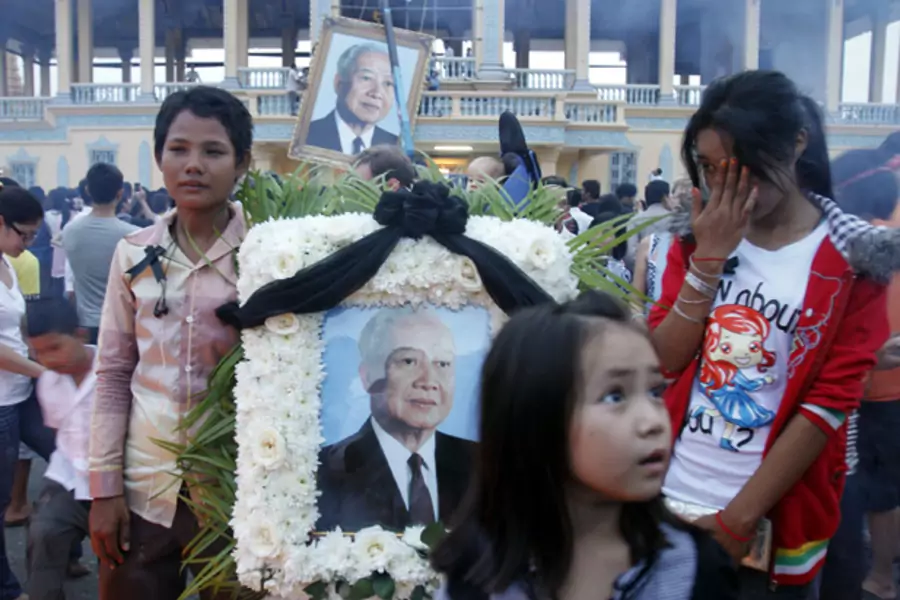The Death of King Sihanouk

Of the major figures from the Indochina Wars of the 1940s, 1950s, 1960s, and 1970s, there are now very few left. Vo Nguyen Giap, military commander for the People’s Army of Vietnam, is still alive, though over one hundred years old. Some of the wartime leaders from Laos remain alive. A few mid-level figures from the American side are still around, though the senior army and civilian leaders are all gone.
On Monday, Beijing time, the biggest figure still alive from that period, former King Norodom Sihanouk of Cambodia, passed away. He had been ill for some time, and was constantly traveling to and from Beijing for hospital care, so this was not a huge surprise. The king also had become less relevant in Cambodia in recent years, handing over the throne to his son Sihamoni, no longer writing his frequent missives in French —and often in a penname— criticizing the government or the general state of affairs in the country, and finding the power of the monarchy curtailed severely by longtime prime minister Hun Sen. Several recent newswire stories actually have portrayed Sihamoni as a kind of prisoner in the royal palace in Phnom Penh, able to do virtually nothing without it being approved by Hun Sen —though, of course, Sihanouk actually was a prisoner in the palace during the 1975-1979 Khmer Rouge period, when he was kept under house arrest and, to Sihanouk’s eternal shame, forced to cook his own food.
More on:
There are already many obituaries released that describe Sihanouk’s enormous importance and contradictory, even maddening, traits: A deep love for his country combined with a patriarchal view of “my people” as needing his benevolent guidance always; a skilled political mind that for a time navigated the minefield between the United States, Vietnam, Cambodia’s communists, and China, yet also broke down completely at times, leading Sihanouk to withdraw from public life or be bested, as at the Paris Peace Accords, by men like Hun Sen; a desire to expand education in Cambodia by opening many new schools in the 1950s and 1960s yet a willingness to abandon his countrymen to the grim fate of the Khmer Rouge, which Sihanouk understood to be a coming atrocity, warning his own personal aides not to return to Cambodia under the Khmer Rouge and instead remain in France, as Elizabeth Becker has noted.
Not noted in many obituaries, however, is one important point. At several times during his reign, Sihanouk made noises about opening Cambodia up to true multi-party democracy, but he never could really do so, preferring instead to keep all parties under the thumb of himself and the royalist establishment. At times, his beneficent monarchical style proved effective —in the 1940s, 1950s and early 1960s, he made many judicious and foresighted decisions for his country. But though he is hardly the only one to blame for Cambodia’s current political state, his inability to ever move beyond his patrician, monarchical, and authoritarian style left a legacy of big man rule that Hun Sen, for years Sihanouk’s antagonist, has readily adopted. Today, in fact, the true heir of Sihanouk is not his son Sihamoni, who sits on a far less valuable throne, but rather Hun Sen, who controls Cambodia the way Sihanouk once did.
More on:
 Online Store
Online Store